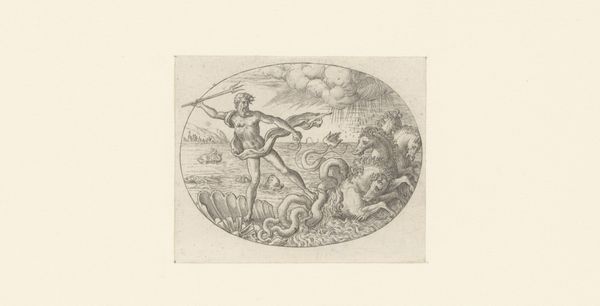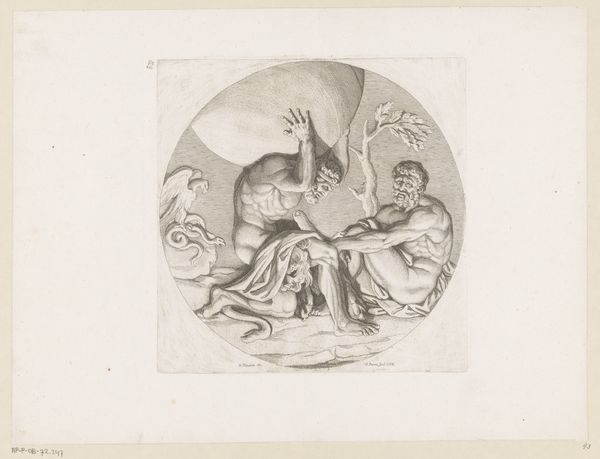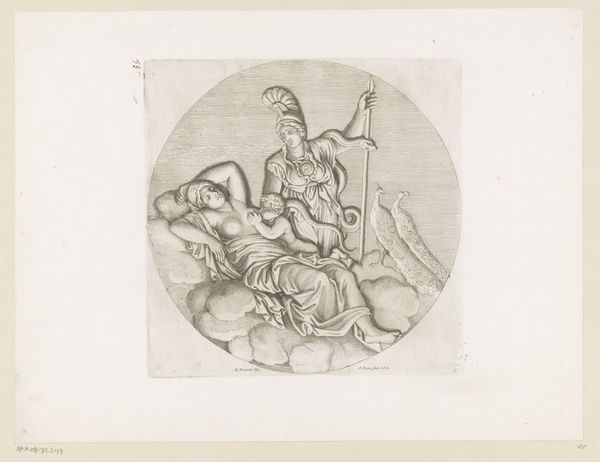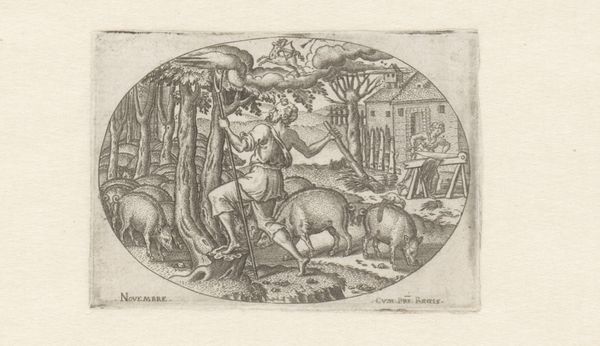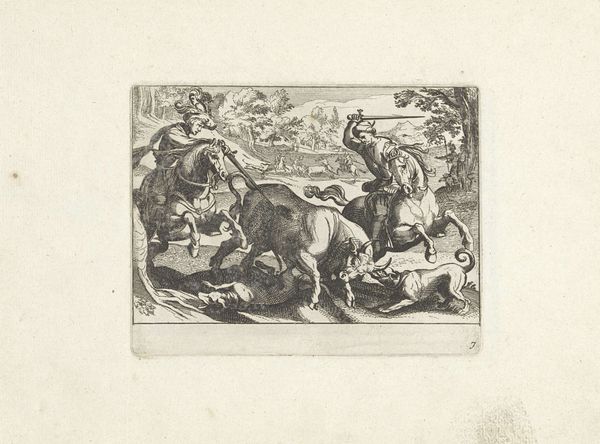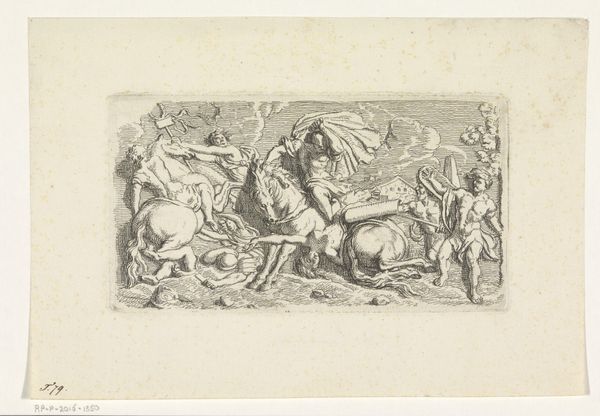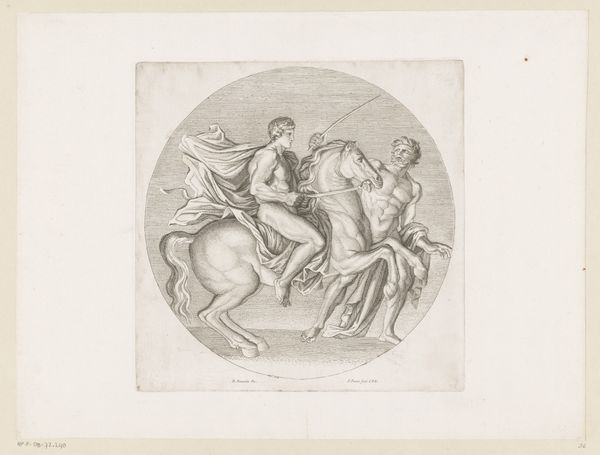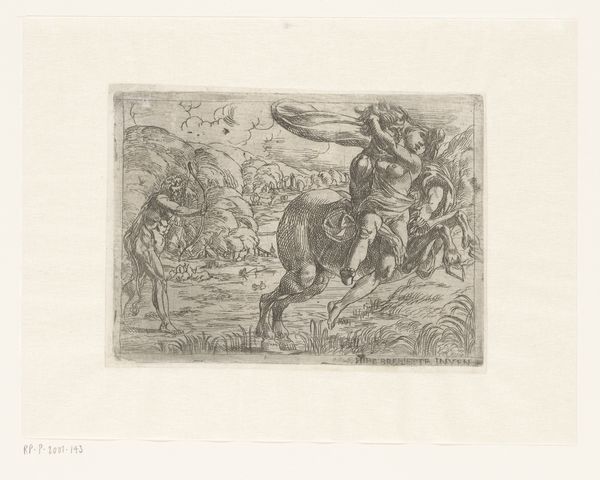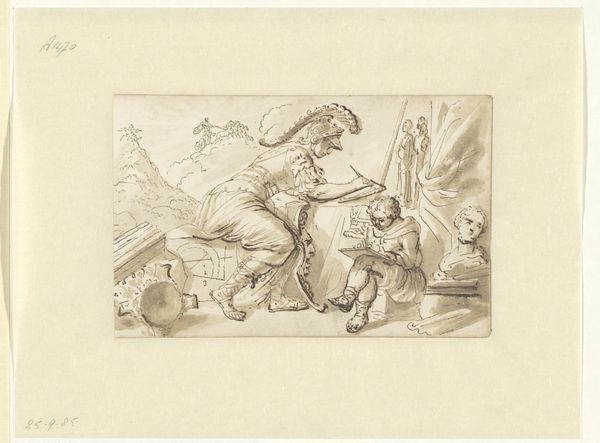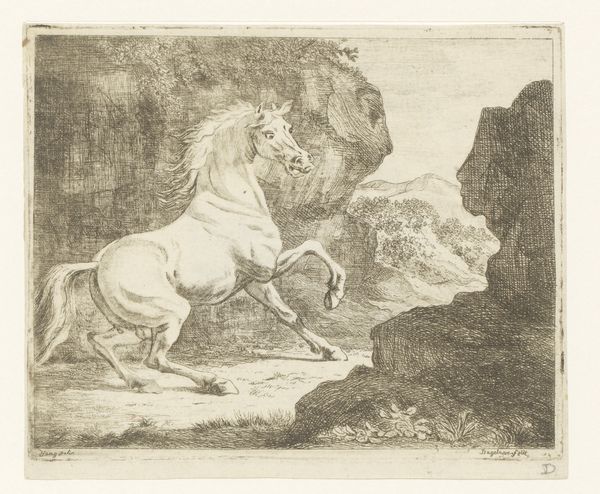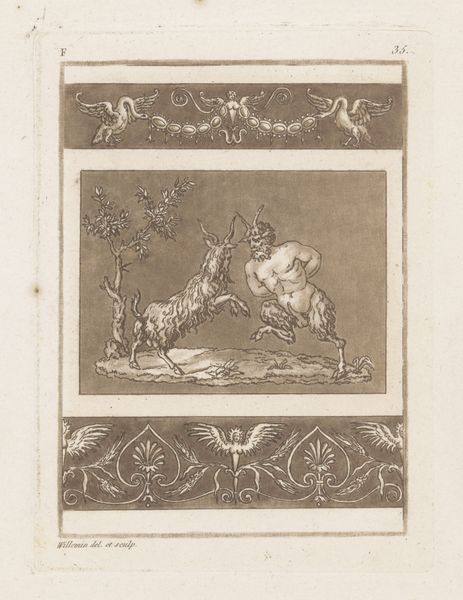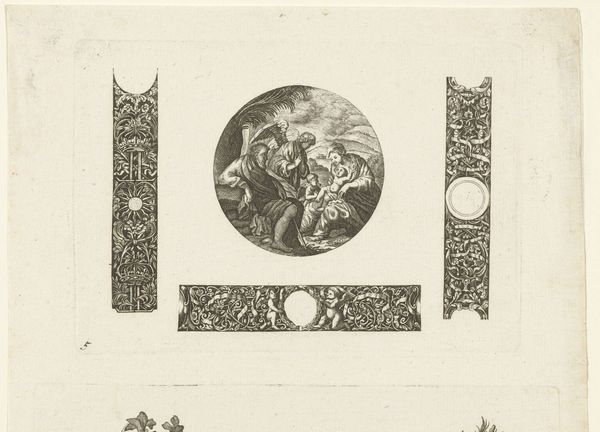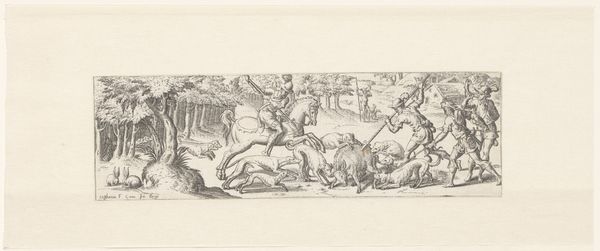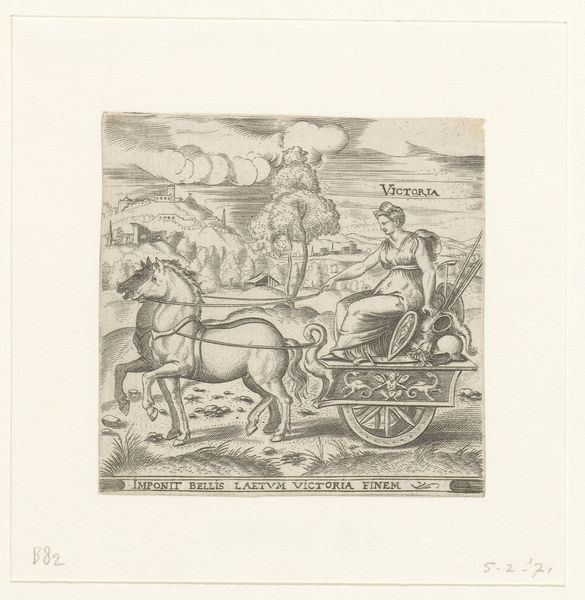
engraving
#
baroque
#
greek-and-roman-art
#
old engraving style
#
figuration
#
line
#
history-painting
#
engraving
Dimensions: height 292 mm, width 290 mm
Copyright: Rijks Museum: Open Domain
Curator: This is a 1678 engraving by Jean Pesne, titled "Hercules in a Chariot Drawn by Four Horses." It’s currently held in the Rijksmuseum collection. Editor: It strikes me as quite austere, almost rigidly formal, despite the dynamic subject. The texture looks flat, the color leached—I feel as though I am peering at the scene through several layers of time. Curator: Well, engraving tends to lend itself to linear precision, fitting for a Baroque embrace of classical themes. Look at the distinct lines creating depth and muscle tone in Hercules. His very figure is an embodiment of power. What symbolic narratives are being reinforced through this representation of Hercules? Editor: True, but the heroic subject matter and clear linework almost buckle under the pressure of historical expectations. Look at how each horse has been created using line, etched in incredible detail but still gives little to show individual muscular strain. I think it fails to communicate how the artwork wants to convey an energy of godly transportation Curator: Indeed, there’s a deliberate quality to the procession. The horses are uniform. Think of the deeper meaning—Hercules isn't just strong, but in total command, embodying reason over chaotic force. His association with morality and civilisation is key. What the print gains in moral emphasis it loses in sensory richness. Editor: Interesting! I'm much more attuned to the process. It’s the methodical labour and mechanical reproducibility of the engraving medium itself that fascinates. The print intends to disseminate ideals but truly reflects a cultural system geared towards standardization of visual symbols. What kind of viewership was Pesne aiming to capture at this time, what was their expectation for viewing this popular hero? Curator: Considering the Baroque context, the engraving could have served as both a decorative element and as a means of promoting specific virtues and political values during that era. There's something about its ability to disseminate classical heroism for those living during 17th century that should make us question whether it really did reach all viewership in the same way or if, despite efforts, was restricted. Editor: The choice of engraving allowed Pesne to reach an audience that painted works and grand sculptures couldn’t. Although, even within the system that he took part in, perhaps, if it was not truly accessible to all people. Still the question still begs - how might the consumption of reproducible images like this change perception and values over time? Curator: That is something that the artwork itself is almost pushing its viewers to consider! Thanks for making the social implications much more clear for us today! Editor: Absolutely, I appreciate you sharing your knowledge too!
Comments
No comments
Be the first to comment and join the conversation on the ultimate creative platform.
